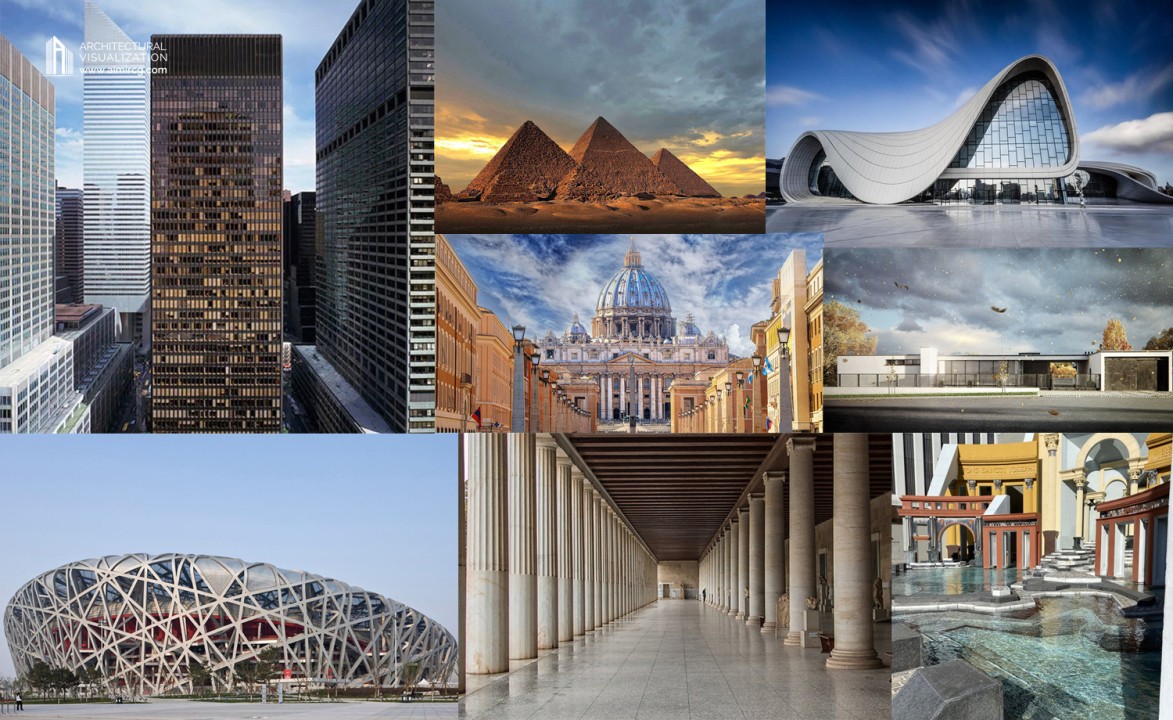Embark on a transformative quest to the divine.
Spiritual Journeys: Pilgrimages to Sacred Sites and Religious Centers are deeply rooted in the human experience, spanning across various cultures and religions. These journeys hold immense significance for individuals seeking spiritual growth, enlightenment, and a deeper connection with their faith. Whether it be visiting holy sites, embarking on religious rituals, or participating in communal worship, these pilgrimages offer a unique opportunity for individuals to explore their beliefs, find solace, and experience a profound sense of spirituality. Throughout history, countless pilgrims have embarked on these sacred journeys, leaving behind a rich tapestry of traditions, stories, and spiritual practices that continue to inspire and guide seekers on their own spiritual paths.
The Significance of Pilgrimages in Different Religions
Pilgrimages have long been an integral part of religious practice in various cultures and religions around the world. These spiritual journeys to sacred sites and religious centers hold great significance for believers, offering them a unique opportunity to deepen their faith and connect with the divine. While the specific rituals and practices may differ, the underlying purpose of these pilgrimages remains the same – to seek spiritual enlightenment and forge a closer relationship with the divine.
In Christianity, pilgrimages hold a special place as a means of expressing devotion and seeking spiritual renewal. The most famous pilgrimage site in Christianity is undoubtedly the Holy Land, which encompasses various locations associated with the life and ministry of Jesus Christ. From the birthplace of Jesus in Bethlehem to the crucifixion site in Jerusalem, these sacred sites draw millions of pilgrims each year. Walking in the footsteps of Jesus allows believers to connect with their faith on a deeper level and gain a better understanding of the biblical events that shaped their religion.
Similarly, in Islam, the Hajj pilgrimage to Mecca is considered one of the Five Pillars of Islam and is obligatory for all able-bodied Muslims at least once in their lifetime. The significance of this pilgrimage lies in its association with the Prophet Muhammad and the Kaaba, the holiest site in Islam. Pilgrims perform a series of rituals, including circling the Kaaba, running between the hills of Safa and Marwa, and standing on the plain of Arafat. The Hajj serves as a powerful reminder of the unity of the Muslim ummah (community) and the equality of all believers before Allah.
In Hinduism, pilgrimages are an essential part of spiritual practice, with numerous sacred sites scattered across the Indian subcontinent. The most famous of these is the Kumbh Mela, a massive gathering of Hindu devotees that takes place every twelve years. Millions of pilgrims converge at the confluence of the Ganges, Yamuna, and Saraswati rivers to bathe in the holy waters, seeking purification and spiritual blessings. Other significant pilgrimage sites in Hinduism include Varanasi, the city of Lord Shiva, and the Char Dham, a circuit of four sacred shrines in the Himalayas.
Buddhism also places great importance on pilgrimages, with followers undertaking journeys to sites associated with the life of Gautama Buddha. The most revered pilgrimage site in Buddhism is Bodh Gaya, where the Buddha attained enlightenment under the Bodhi tree. Pilgrims meditate and offer prayers at this sacred spot, seeking spiritual awakening and enlightenment. Other significant pilgrimage sites in Buddhism include Lumbini, the birthplace of the Buddha, and Sarnath, where he delivered his first sermon.
In conclusion, pilgrimages hold immense significance in various religions, providing believers with a unique opportunity to deepen their faith and connect with the divine. Whether it is the Holy Land in Christianity, Mecca in Islam, the Kumbh Mela in Hinduism, or Bodh Gaya in Buddhism, these sacred sites and religious centers serve as focal points for spiritual journeys. Through rituals, prayers, and acts of devotion, pilgrims seek spiritual enlightenment, purification, and a closer relationship with the divine. Regardless of the specific religious tradition, the underlying purpose of these pilgrimages remains the same – to embark on a spiritual quest and experience a profound transformation of the soul.
Exploring Sacred Sites: A Journey of Spiritual Awakening
Exploring Sacred Sites: A Journey of Spiritual Awakening
Embarking on a spiritual journey is a deeply personal and transformative experience. For many, this journey involves visiting sacred sites and religious centers around the world. These pilgrimages offer a unique opportunity to connect with one’s faith, find inner peace, and gain a deeper understanding of the world’s diverse religious traditions.
Sacred sites hold a special place in the hearts of believers. They are often associated with significant events, revered figures, or miraculous occurrences. These places are believed to be imbued with spiritual energy, making them ideal destinations for those seeking a closer connection to the divine.
One such sacred site is the ancient city of Jerusalem. For Christians, Jews, and Muslims alike, this city holds immense religious significance. From the Western Wall to the Church of the Holy Sepulchre, each site tells a story that spans centuries. Pilgrims who visit Jerusalem often describe a profound sense of awe and reverence as they walk in the footsteps of their faith’s founders.
Another popular destination for spiritual seekers is Varanasi, India. Situated on the banks of the sacred Ganges River, this city is considered one of the holiest places in Hinduism. Pilgrims come from far and wide to bathe in the river’s purifying waters and perform rituals at the numerous temples that line its shores. The atmosphere in Varanasi is electric, with the constant sound of prayers and the smell of incense filling the air.
In addition to these well-known sites, there are countless other religious centers around the world that offer a unique spiritual experience. For Buddhists, a journey to Bodh Gaya in India is a must. This is the place where Siddhartha Gautama, the founder of Buddhism, is said to have attained enlightenment under the Bodhi tree. Pilgrims meditate under the tree, seeking their own moments of clarity and understanding.
For those seeking a more introspective journey, the Camino de Santiago in Spain provides a transformative experience. This ancient pilgrimage route, also known as the Way of St. James, stretches across the country and culminates at the Cathedral of Santiago de Compostela. Walking the Camino is not only a physical challenge but also a chance to reflect on one’s life and purpose. Many pilgrims report a sense of renewal and spiritual awakening upon completing this arduous journey.
Regardless of the specific destination, embarking on a pilgrimage is a deeply personal and individual experience. It is a time for introspection, reflection, and connection with the divine. The journey itself becomes a metaphor for the spiritual path, with each step bringing the pilgrim closer to their inner truth.
While the physical act of visiting a sacred site is important, it is equally crucial to approach the journey with an open heart and mind. Pilgrims must be willing to let go of preconceived notions and embrace the unknown. It is through this surrender that true spiritual growth can occur.
In conclusion, exploring sacred sites and religious centers is a powerful way to embark on a spiritual journey. These pilgrimages offer a unique opportunity to connect with one’s faith, find inner peace, and gain a deeper understanding of the world’s diverse religious traditions. Whether it is walking the Camino de Santiago or visiting the holy city of Jerusalem, each pilgrimage is a chance for personal transformation and spiritual awakening. So, pack your bags, open your heart, and embark on a journey that will forever change your life.
Unveiling the Mysteries: Religious Centers and Their Spiritual Impact
A spiritual journey is a deeply personal and transformative experience that allows individuals to connect with their inner selves and the divine. One way to embark on such a journey is through pilgrimages to sacred sites and religious centers. These places hold immense spiritual significance and have the power to inspire and transform those who visit them.
Religious centers are often considered the heart and soul of a particular faith or belief system. They serve as gathering places for worship, prayer, and communal activities. These centers are not only physical spaces but also spiritual hubs that radiate a unique energy. They are imbued with the collective prayers, devotion, and spiritual practices of countless individuals who have sought solace and enlightenment within their walls.
One such religious center is the Vatican City, the spiritual and administrative headquarters of the Roman Catholic Church. The Vatican is home to St. Peter’s Basilica, the largest church in the world, and the Sistine Chapel, renowned for its breathtaking frescoes by Michelangelo. Pilgrims from all corners of the globe flock to the Vatican to witness the grandeur of these sacred spaces and to seek blessings from the Pope. The Vatican’s spiritual impact is undeniable, as it offers a sense of awe and reverence that can only be experienced in person.
Another significant religious center is Mecca, the holiest city in Islam. Every year, millions of Muslims undertake the Hajj pilgrimage to Mecca, following in the footsteps of the Prophet Muhammad. The Kaaba, a black cube-shaped structure at the center of the Grand Mosque, is the focal point of this pilgrimage. Muslims believe that the Kaaba is the house of God and that circumambulating it during the Hajj is a profound act of devotion. The spiritual impact of Mecca is profound, as it unites Muslims from diverse backgrounds in a shared experience of faith and submission to God.
In addition to religious centers, there are numerous sacred sites around the world that hold deep spiritual significance. One such site is the Ganges River in India. Hindus believe that bathing in the Ganges cleanses them of their sins and grants them spiritual purification. The city of Varanasi, located on the banks of the Ganges, is considered one of the holiest places in Hinduism. Pilgrims come to Varanasi to perform rituals, cremate their loved ones, and immerse themselves in the sacred waters of the Ganges. The spiritual impact of the Ganges is palpable, as it represents the eternal flow of life and the cycle of birth, death, and rebirth.
Similarly, the Western Wall in Jerusalem holds immense spiritual significance for Jews around the world. It is the last remaining remnant of the Second Temple and is believed to be the closest physical connection to God. Jews from all walks of life come to the Western Wall to pray, pour out their hearts, and seek solace. The spiritual impact of the Western Wall is profound, as it represents the resilience and enduring faith of the Jewish people.
In conclusion, spiritual journeys to sacred sites and religious centers offer individuals the opportunity to connect with their inner selves and the divine. These places hold immense spiritual significance and have the power to inspire and transform those who visit them. Whether it is the Vatican, Mecca, the Ganges, or the Western Wall, these sites leave a lasting impact on the hearts and minds of pilgrims. They serve as reminders of the power of faith, devotion, and the universal quest for spiritual enlightenment.In conclusion, spiritual journeys such as pilgrimages to sacred sites and religious centers hold significant importance for individuals seeking a deeper connection with their faith and spirituality. These journeys provide opportunities for personal reflection, growth, and a sense of unity with others who share similar beliefs. By visiting these sacred places, individuals can experience a profound sense of peace, enlightenment, and spiritual renewal. Whether it is a pilgrimage to Mecca for Muslims, a visit to the Vatican for Catholics, or a journey to the Ganges River for Hindus, spiritual journeys offer a transformative experience that can strengthen one’s religious convictions and foster a deeper understanding of their place in the world.




